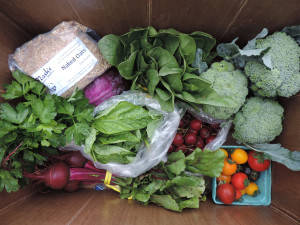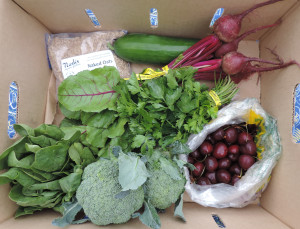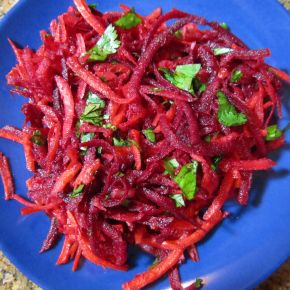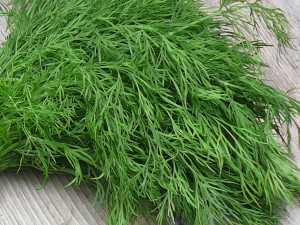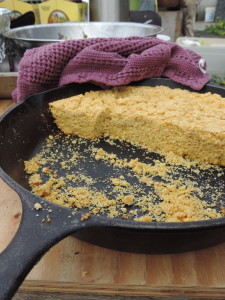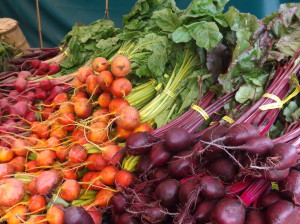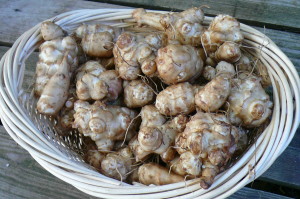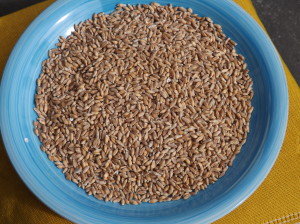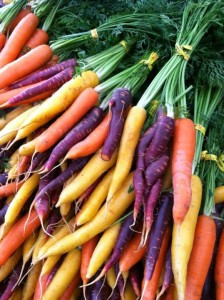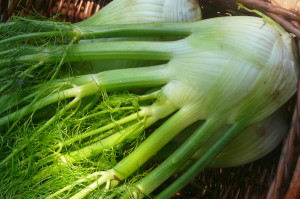Standard Box
Red Beets with Greens
Broccoli, 1.25 lbs.
Spinach
Italian Parsley
Naked Oats, 1 pint
Basil, .25 lb.
Cherry Tomatoes, 1 pint
Red Cabbage
Cherries, ACMA Mission Orchards,
Wenatchee, 1.3 lb.
Small Box
Red Beets with Greens
Broccoli, 1 lb.
Spinach
Italian Parsley
Naked Oats, 1 pint
Cucumber
Cherries, ACMA Mission Orchards,
Wenatchee, 1.3 lb.
Try this delicious recipe with Nash’s Naked Oats
These hull-less oats, or Naked Oats as we prefer to call them, have a great variety name—Streaker! They are the same as other oats, but their hulls are looser so that when they go through the combine, most of the hulls shake off easily.
They also have the same powerful health benefits as other varieties of oats, including their cholesterol-lowering fiber, called beta-glucan. There were so many studies done since the 1960s proving the beneficial effects of this special fiber on cholesterol levels that by the 1980s, oats were the center of many fad diets. The fad may have passed, but starting your day with fresh-cooked oatmeal is still a wise choice, especially for folks with a higher risk of heart disease, high blood pressure, or stroke.
One cup of oats gives you 70% of your daily manganese requirement, plus vitamin B1 and magnesium. Oats may also help prevent type 2 diabetes and bolster your immune system. There is even evidence that it fights cancer, specifically breast cancer.
Pan-seared Oatmeal
1.5 cups Nash’s Naked Oats
2 cups milk or coconut milk
2 cups water
1/3 cup brown sugar
1/8 tsp. salt
Put the oats into a food processor or blender and pulse several times to coarse-grind. Bring the milk and water to a boil, add brown sugar, salt and oats and then let simmer, stirring constantly, for about 20 minutes, until thick and oats are soft.
Pour the mixture into a rectangular baking dish and let cool for at least an hour to become solidified. Meanwhile, bring 1 cup honey to a boil. Put some fruit, like blueberries or cut up apple in a bowl and pour the honey over them. Let stand.
Lightly coat a frying pan with vegetable oil or butter. Place on medium heat. Cut the oatmeal into squares and sear each piece on each side. Place on plates and pour the honey/fruit mixture over the tops. Garnish with a little grated coconut and slivered almonds, if you like.
For a super-simple oatmeal recipe, try the Crockpot Oatmeal at our Recipe Blog on Nash’s website, http://nashsorganicproduce.com/recipes/crockpot-oatmeal-with-nashs-naked-oats/
Beets & Greens
Beets are high in fiber and folate, and loaded with minerals that are important for our metabolism such as iron, zinc, calcium, copper, magnesium, and potassium. Beets are an excellent source of manganese, a mineral that is important for bone health, and they are a good source of selenium which is an antioxidant that helps to protect our bodies from harmful reactive oxygen species by neutralizing these molecules to harmless compounds such as water- it’s like magic!
Don’t throw away those greens! They are an excellent source of fiber as well as B vitamins in more concentrated quantities than the beet roots offer. They also offer a whopping amount of vitamins A and K. Beet greens are delicious sautéed in olive oil with a splash of balsamic vinegar, they can be served with their roots in a dish or can stand on their own as a side to any meal. They can act as a substitute to chard in any recipe.
Raw Beet Salad
This sweet and crunchy salad is a perfectly nourishing side dish for these hot summer days. 4 servings.
1 to 1 ½ pounds beets, preferably small
2 large shallots
Salt and freshly ground black pepper
2 teaspoons Dijon mustard, or to taste
1 tablespoon extra virgin olive oil
2 tablespoons sherry or other good strong vinegar
1 sprig fresh tarragon, minced, if available
1/4 cup chopped parsley leaves
Peel the beets and shallots. Combine them in a food processor and pulse carefully until the beets are shredded; do not purée. (Or grate the beets by hand and mince the shallots, then combine.) Scrape into a bowl.
Toss with the salt, pepper, mustard, oil and vinegar. Taste and adjust the seasoning. Toss in the herbs and serve. We thank markbittman.com for this recipe.

